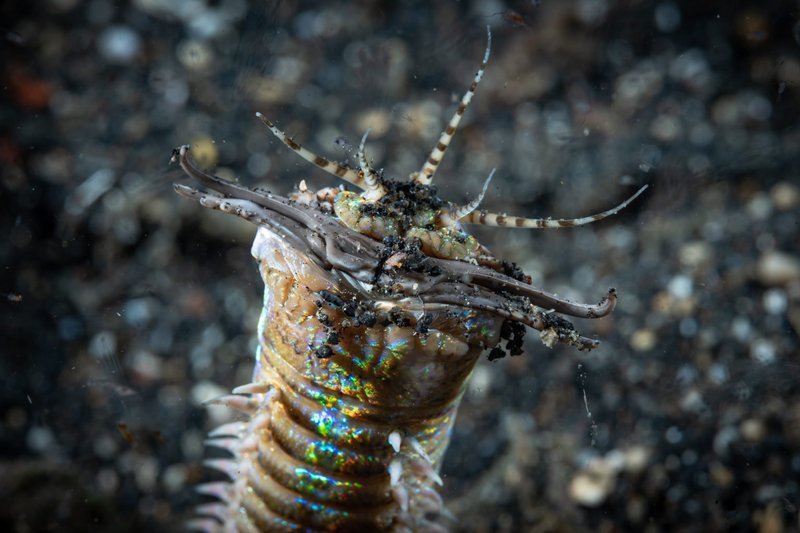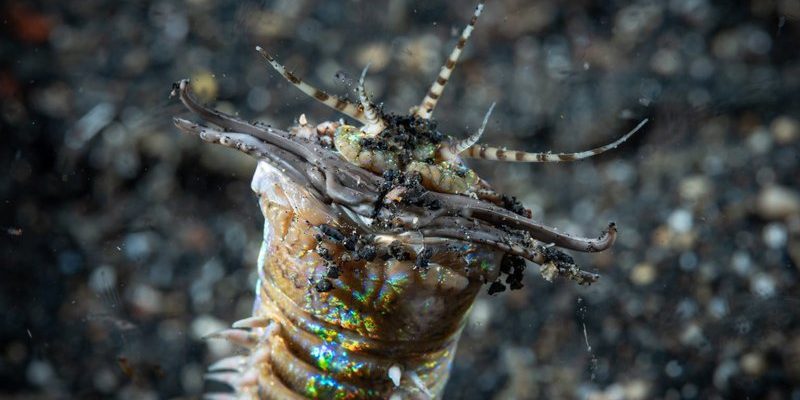
Honestly, Bobbit worms are fascinating, but they can disrupt the harmony in your aquarium. These worms can grow up to three feet long and have strong jaws that they use to ambush prey. If you’ve got a reef tank or a community setup, you want to ensure that the tankmates you choose can coexist peacefully and aren’t potential targets for these carnivorous creatures. So, let’s explore which fish and invertebrates make poor companions for your aquatic setup if Bobbit worms are lurking.
Understanding Bobbit Worms and Their Impact
Bobbit worms, scientifically known as *Eunice aphroditois*, are free-ranging polychaete worms that thrive on the seafloor. They are best known for their unique hunting technique, where they bury themselves in the substrate and draw in their prey in a flash. This hunting strategy can create a precarious environment for smaller fish and other invertebrates in your aquarium.
While these worms can be entertaining observers in the wild, in your tank, they can wreak havoc. If you’ve suspected a Bobbit worm is present, your tankmates’ safety is paramount. That’s why it’s important to know the type of fish and invertebrates that are at risk. Ensuring a peaceful environment requires understanding the potential dangers these worms present to your aquarium’s ecosystem.
Small Fish and Bobbit Worms: A Dangerous Mix
When it comes to tankmates you’ll want to avoid, think twice about including small fish species. Fish that are under three inches long, like neon tetras or guppies, might seem like a great addition to your community tank, but these tiny fish are easy prey for Bobbit worms. They tend to hang out near the substrate, where worms are most likely to ambush them.
Imagine your neon tetra zipping around, showcasing its beautiful colors. Suddenly, out of nowhere, a Bobbit worm strikes. It’s a nightmare scenario for an amateur aquarist, and unfortunately, it’s a reality if you’re not cautious. Not only do you risk losing your delicate fish, but you also create stress within the tank as other fish sense the danger.
If you already have small fish, consider tank upgrades or protective measures to safeguard them. Additionally, keeping an eye on their behavior can help you spot any risks. If they seem stressed or are hiding more than usual, taking action might be necessary.
Invertebrates That Don’t Stand a Chance
Invertebrates are another category you want to be careful with if you suspect Bobbit worms. Creatures like shrimp, crabs, and small snails can quickly become lunch for these worms. Many invertebrates are not only tasty but also prefer closer proximity to the substrate, making them easy targets.
For instance, your lovely cleaner shrimp might be busy picking at algae on the substrate when it gets snatched up. It’s tragic, right? If you’re aiming for a diverse tank filled with invertebrates, it’s best to leave them out if you think a Bobbit worm lives there.
You might consider pairing hardier invertebrates instead. Bigger shrimp or species that can establish a territory away from the substrate can be a safer choice for your tank. Always research the specific species to ensure their safety when dealing with Bobbit worms.
Medium-Sized Fish: Risky Companions
Medium-sized fish, generally those in the 3–6 inch range, can also be at risk if Bobbit worms are present. Species like angelfish or certain types of barbs might be strong swimmers, but they can still fall victim if they venture too close to a Bobbit worm’s territory. While these fish might not be the primary targets, they are certainly not safe.
Let’s say you introduce a beautiful angelfish to your tank. It swims down around the substrate, investigating. Suddenly, it gets too close, and the worm strikes. This can not only lead to injury or death for your fish but can also disrupt the entire ecosystem’s balance. Any change in the tank dynamics can lead to stress for remaining fish and invertebrates.
To keep your tank thriving, consider housing medium-sized fish that tend to stay in the upper levels of the tank. Species like rainbowfish might be a better choice, as they are less likely to venture down near the substrate.
Reef Tanks: Fragile Ecosystems
If you’re an enthusiast of reef tanks, you have to be especially careful. Bobbit worms can pose a threat not just to fish but also to corals and other delicate ecosystems. The presence of these worms can lead to unforeseen consequences, such as coral loss or a disruption in the balance of your tank.
For many reef enthusiasts, the idea of losing hard-earned coral frags to a predatory worm is terrifying. Imagine spending hours creating a beautiful display only to have it devastated by a lurking Bobbit worm. Therefore, if you suspect their presence, it may be wise to reconsider the types of corals and other invertebrates you plan to add to your tank.
In many cases, it’s best to opt for coral species that are more resilient or can maintain some distance from the substrate. Corals higher up in the water column may be less vulnerable to any lurking predators.
Identifying Bobbit Worms: A Proactive Approach
So how can you tell if Bobbit worms are in your tank? Observation is key. Keep an eye out for signs like unusual substrate movement, or sudden disappearances of small fish and invertebrates. You may also spot the worms themselves if you’re lucky, as they sometimes extend out of their burrows during feeding times.
Setting up traps can also help confirm their presence. Baiting with fish food can draw them out, allowing you to see if they’re indeed in your aquarium. The best approach is to be proactive. If you detect one, consider removing it promptly to save your other tankmates.
You might also want to look into other tank management strategies, such as adjusting water parameters or increasing tank size to allow for a more balanced environment. Keeping a close watch on your tank over time can prevent more significant problems from surfacing.
Final Thoughts on Bobbit Worms and Tankmates
Living with Bobbit worms in your aquarium doesn’t have to spell disaster, but it does require vigilance. Understanding which fish and invertebrates are at risk is crucial for maintaining a healthy tank environment. Small fish, delicate invertebrates, and even medium-sized fish can find themselves in precarious situations if these predators are around.
To keep your tank healthy and thriving, always research potential tankmates and monitor their behavior closely. It’s all about creating a balanced ecosystem where every creature can thrive without fear of becoming someone else’s dinner. If you suspect you have a Bobbit worm, consider your options for removal carefully, and adjust your tankmates accordingly.
By staying informed and proactive, you can enjoy your aquarium without the lurking danger of Bobbit worms. Remember, every fish and invertebrate has its place in the tank, and your job is to keep it a safe and harmonious home for them all.

